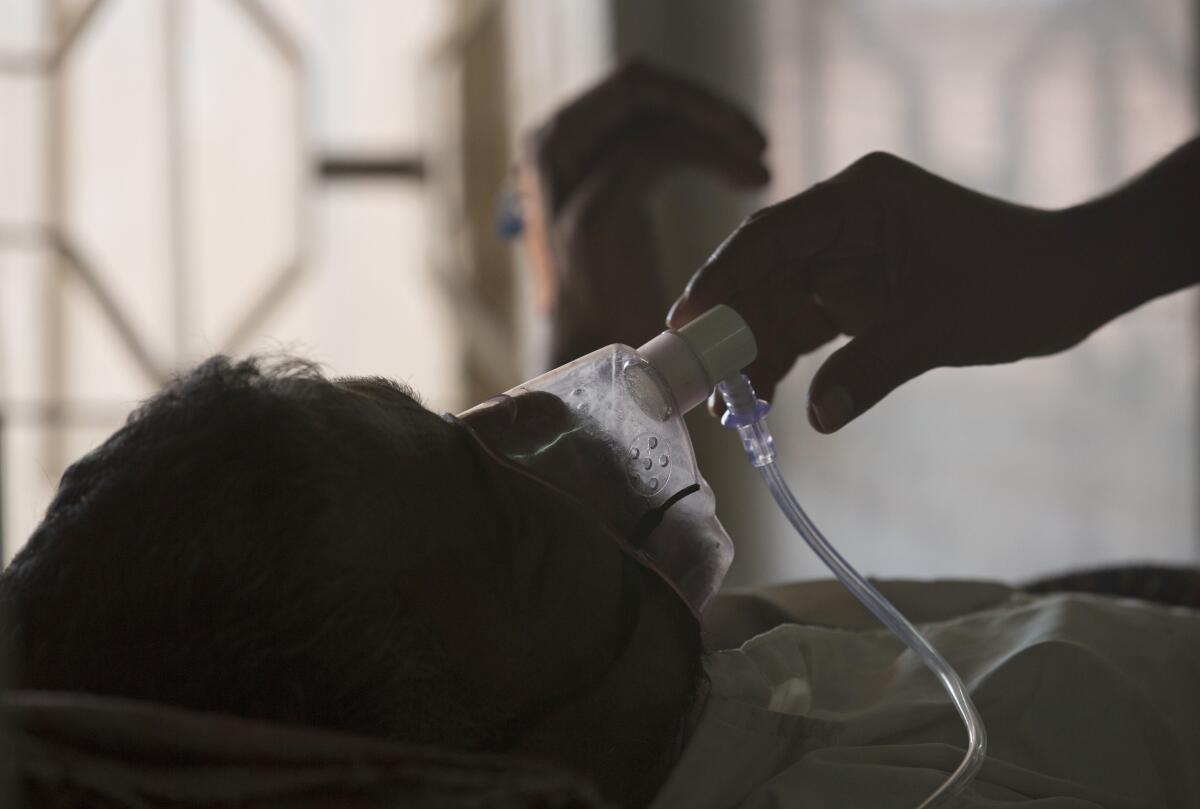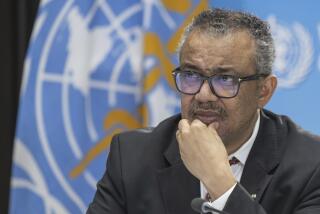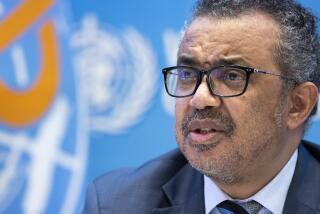Tuberculosis cases worldwide rise for the first time in years

- Share via
GENEVA — The number of people infected with tuberculosis, including the kind resistant to drugs, rose globally for the first time in years, according to a report Thursday by the World Health Organization.
The U.N. health agency said more than 10 million people worldwide were sickened by tuberculosis in 2021, a 4.5% rise from the year before. About 1.6 million people died, it said. The WHO said about 450,000 cases involved people infected with drug-resistant TB, 3% more than in 2020.
Dr. Mel Spigelman, president of the nonprofit TB Alliance, said more than a decade of progress was lost when COVID-19 emerged in 2020.
“Despite gains in areas like preventative therapy, we are still behind in just about every pledge and goal regarding TB,” Spigelman said.
The WHO also blamed COVID-19 for much of the rise in TB, saying the pandemic “continues to have a damaging impact on access to TB diagnosis and treatment.” It said progress made before 2019 has since “slowed, stalled or reversed.”
With fewer people being diagnosed with the highly infectious disease, more patients unknowingly spread tuberculosis to others in outbreaks that may not have been spotted in countries with weak health systems.
The WHO reported that the number of people newly identified with TB fell from 7 million in 2019 to 5.8 million in 2020.
The agency also said COVID-19 restrictions, including lockdowns and physical distancing protocols, hampered TB treatment services and may have prompted some people to skip going to health facilities for fear of catching coronavirus. Officials added that the downturn in the global economy was also a factor, saying that about half of all TB patients and their families face “catastrophic total costs” due to their treatment. The WHO called for more countries to cover all TB diagnosis and treatment expenses.
After COVID-19, TB is the world’s deadliest infectious disease. It is caused by bacteria that typically affect the lungs. The germs are mostly spread from person to person in the air, such as when an infected individual coughs or sneezes.
TB mostly affects adults, particularly those who are malnourished or have other conditions like HIV; more than 95% of cases are in developing countries.
According to the WHO report, only 1 in 3 people with drug-resistant TB are receiving treatment.
“Drug-resistant TB is curable, but alarmingly, cases are on the rise for the first time in years,” said Dr. Hannah Spencer, who is with Doctors Without Borders in South Africa. “It’s urgent that shorter, safer and more effective treatments are scaled up now.”
Spencer called for lowering the prices of TB treatment so a complete treatment course costs no more than $500.
The WHO also said ongoing conflicts in eastern Europe, Africa and the Middle East have worsened the options for patients seeking TB diagnosis and treatment. Ukraine had one of the world’s worst TB epidemics even before Russia invaded the country in February. Health experts fear the inability of patients to get treated could fuel the rise of more drug-resistant TB across the region.
While TB patients displaced by the war can seek care in Ukraine, the country has seen a shortage of key medicines, and authorities face challenges in keeping track of patients.
More to Read
Sign up for Essential California
The most important California stories and recommendations in your inbox every morning.
You may occasionally receive promotional content from the Los Angeles Times.










